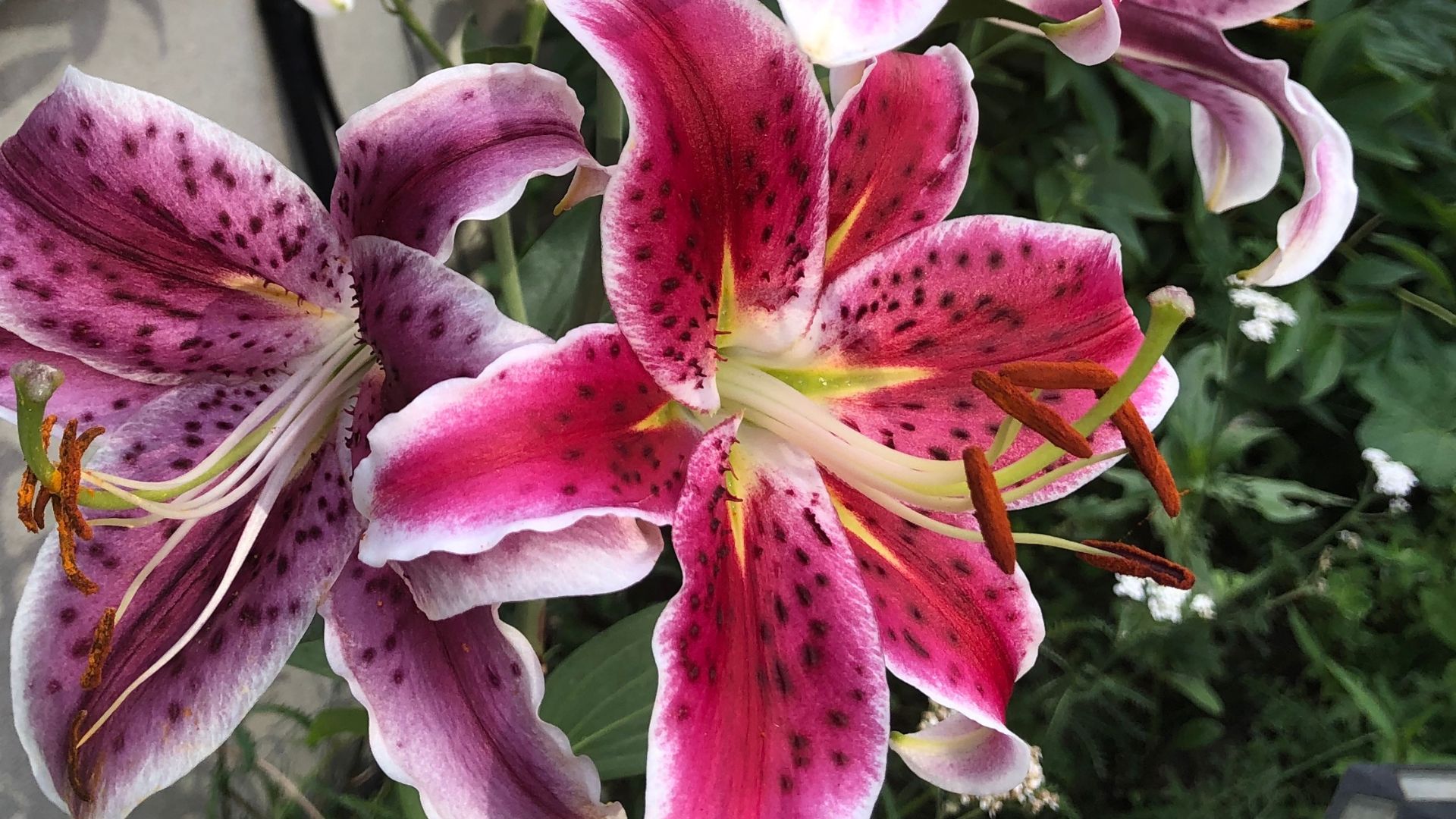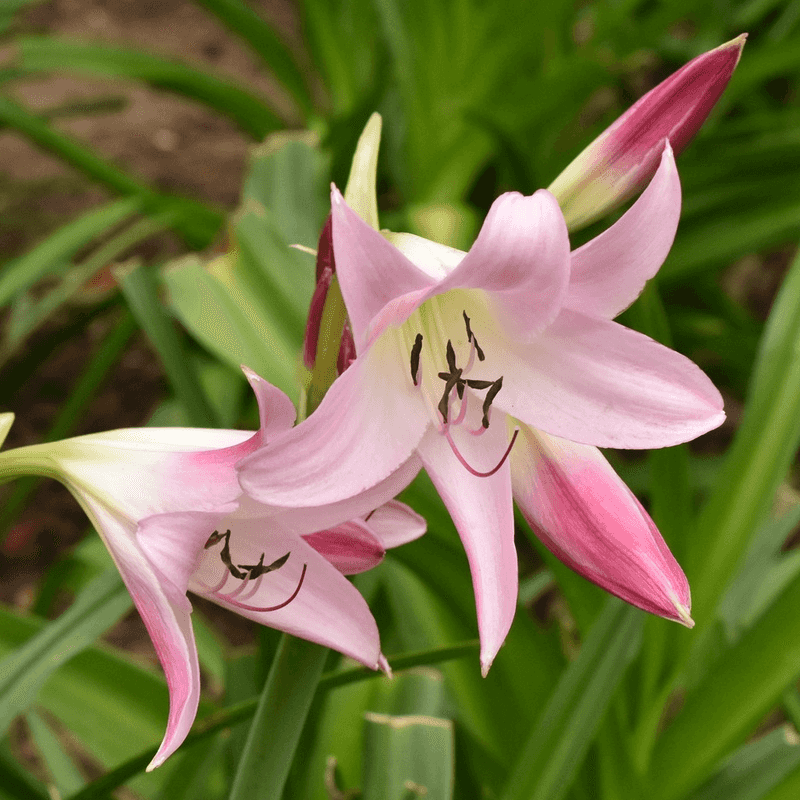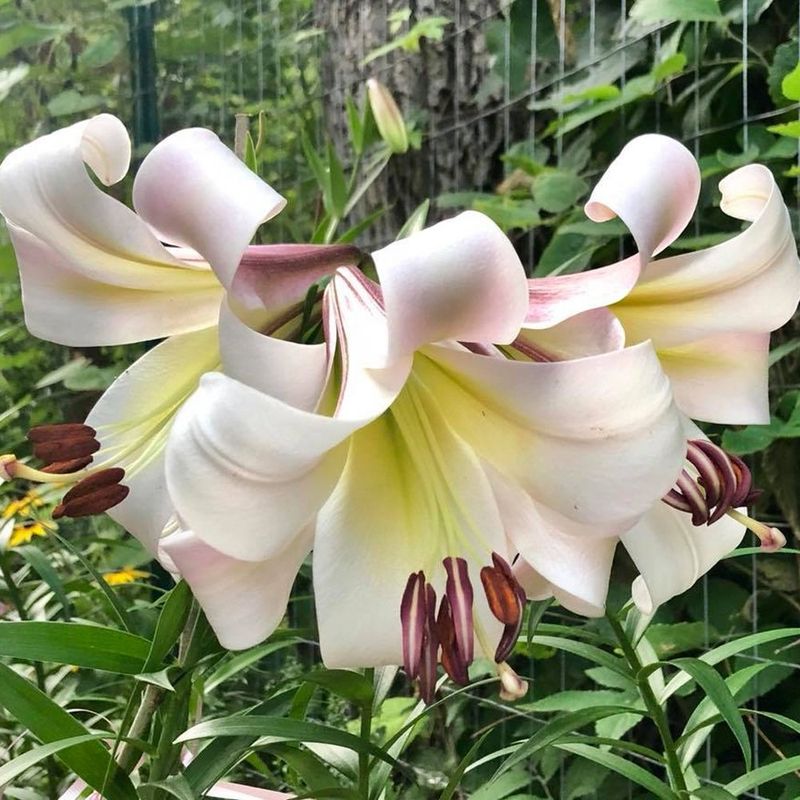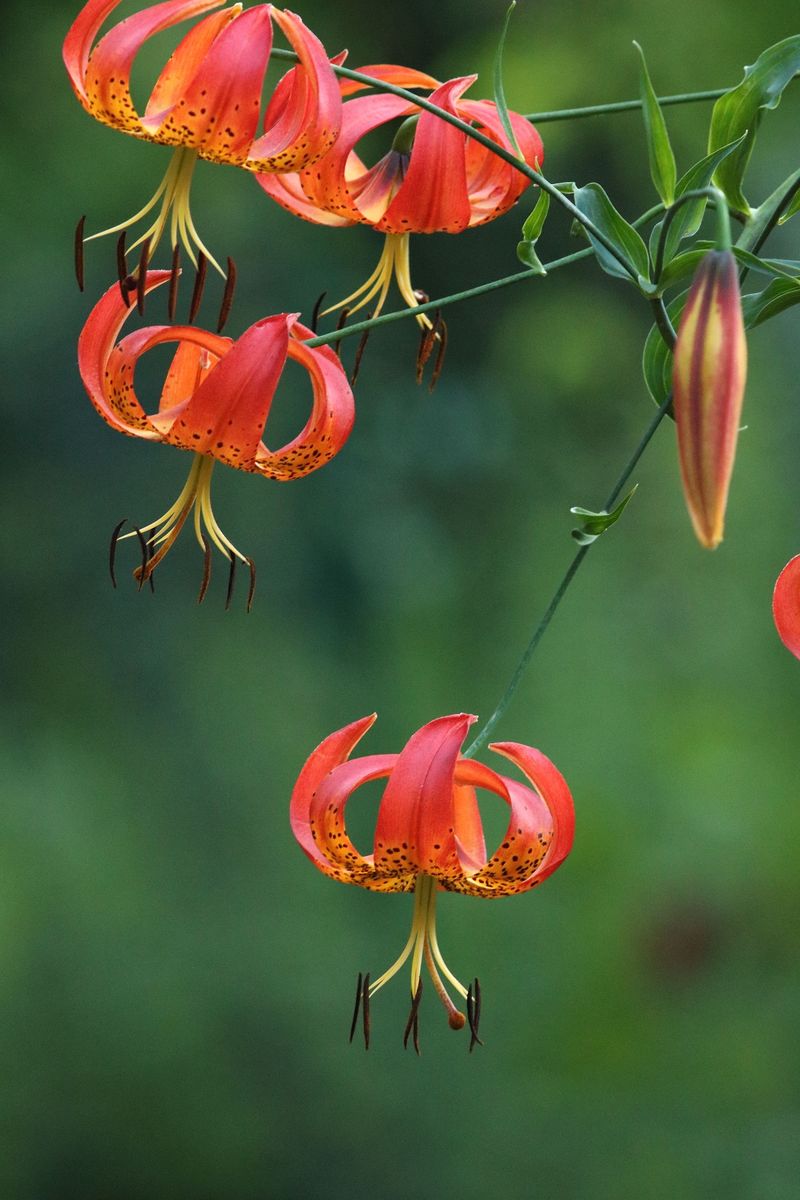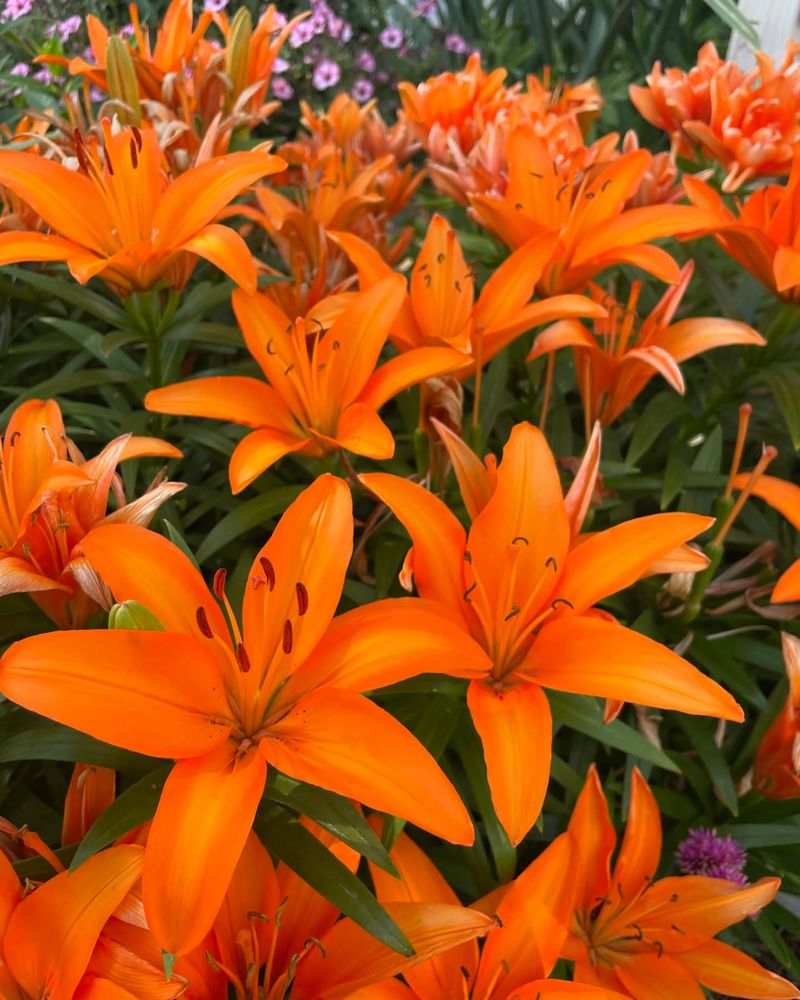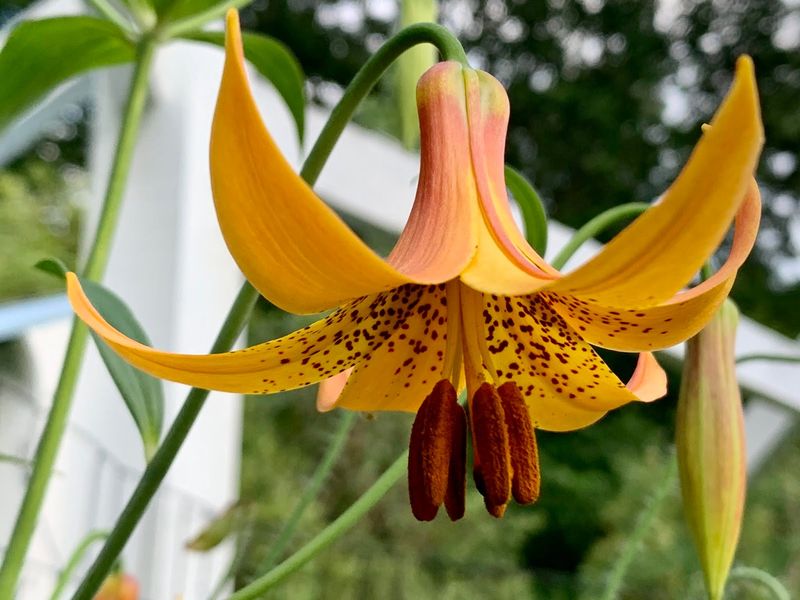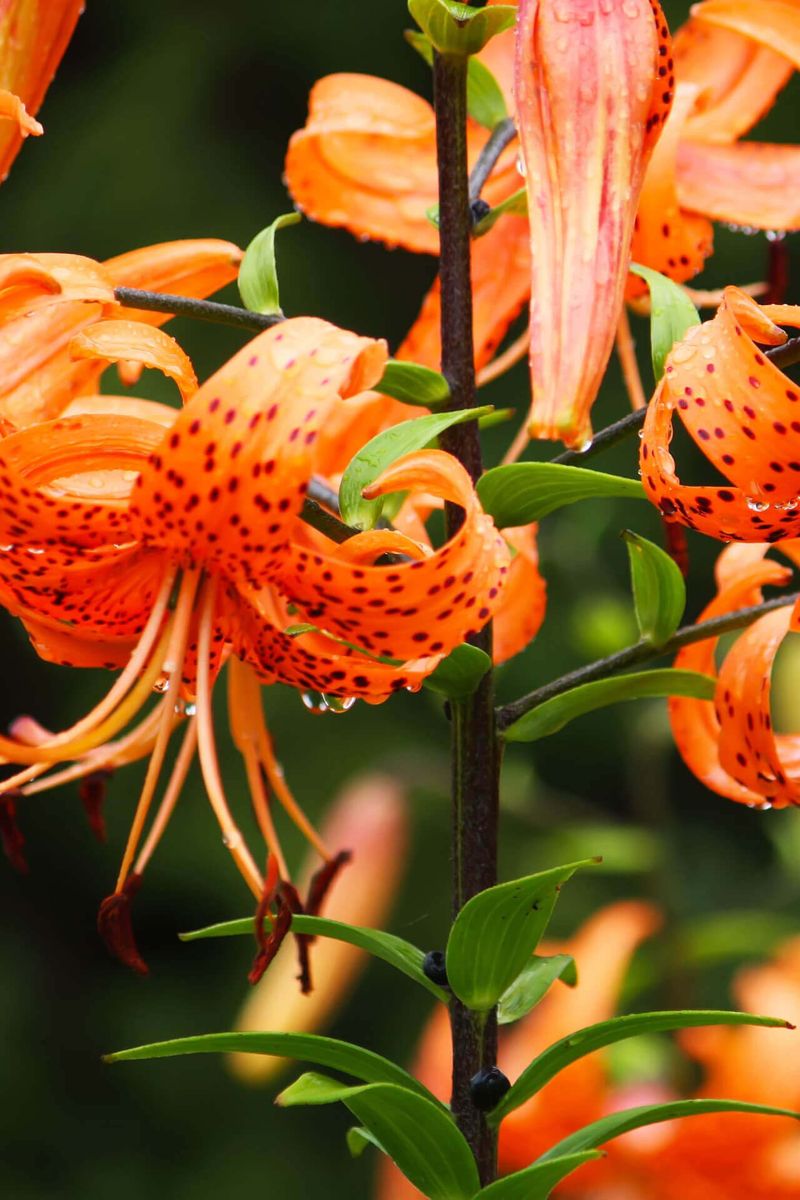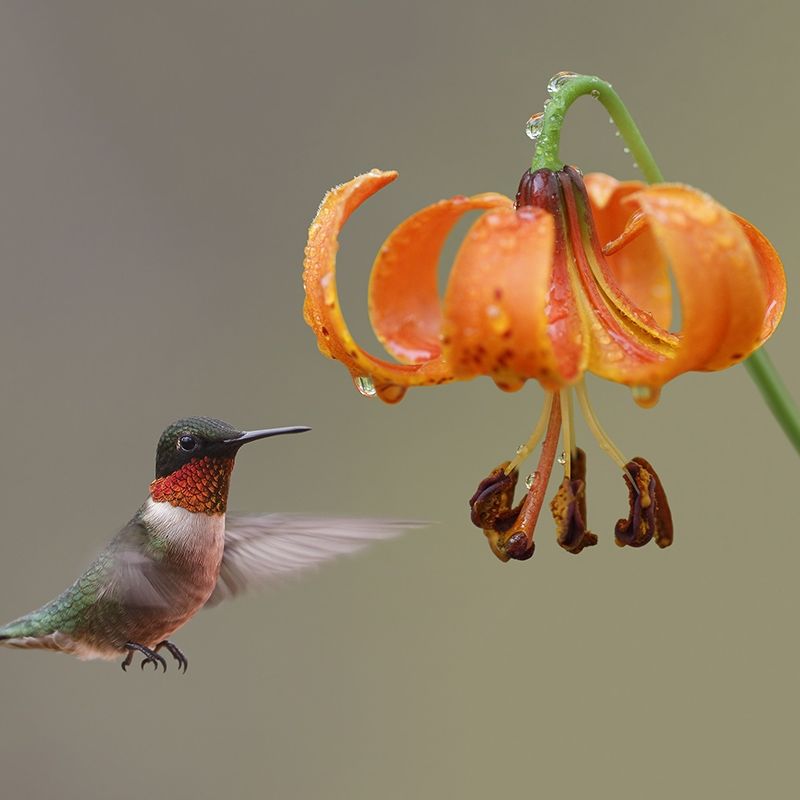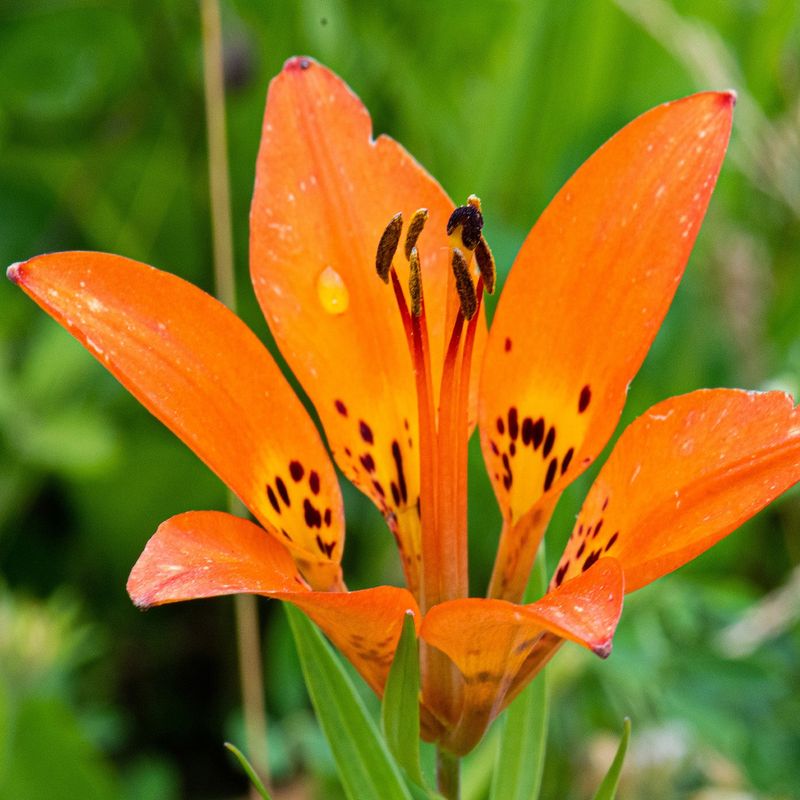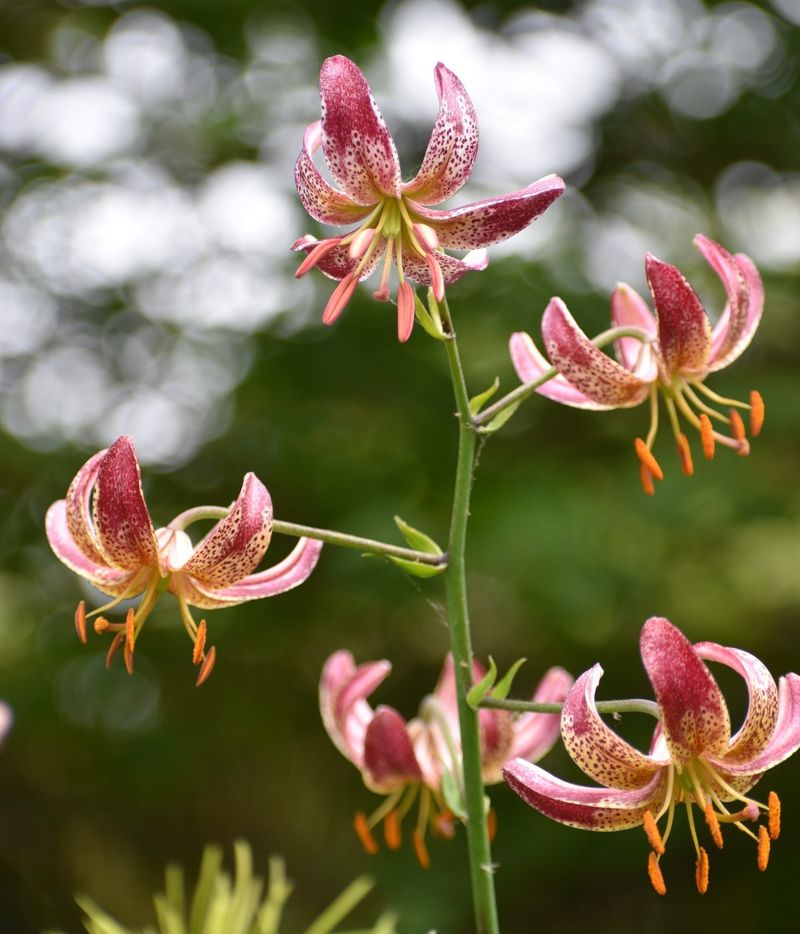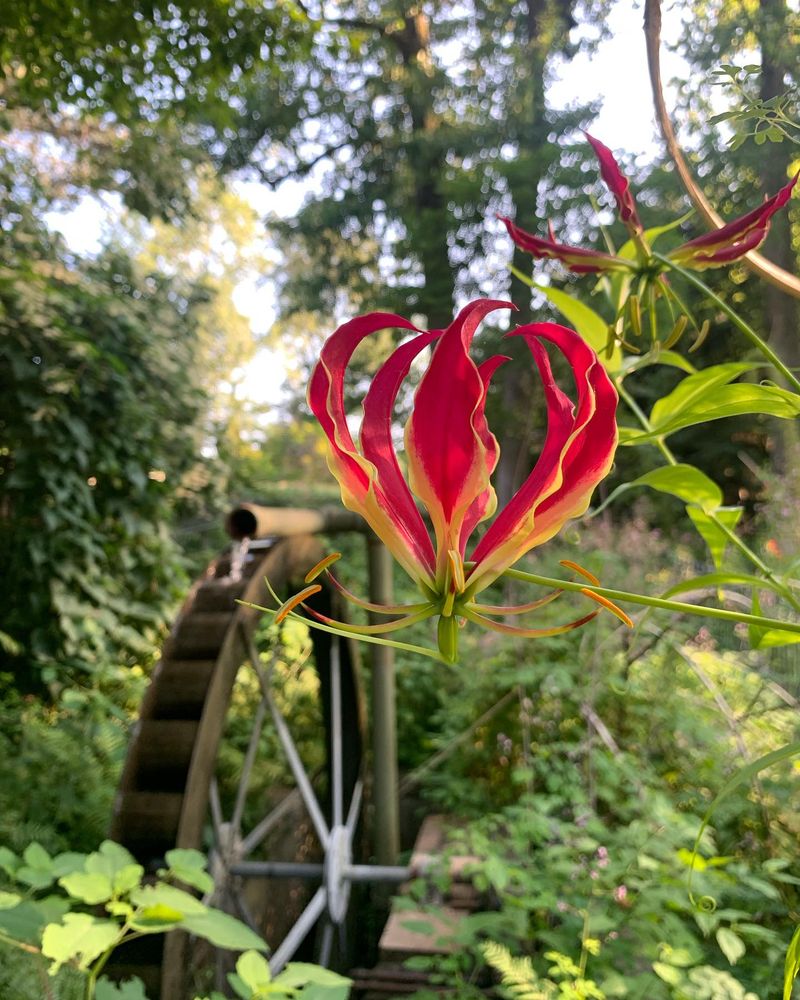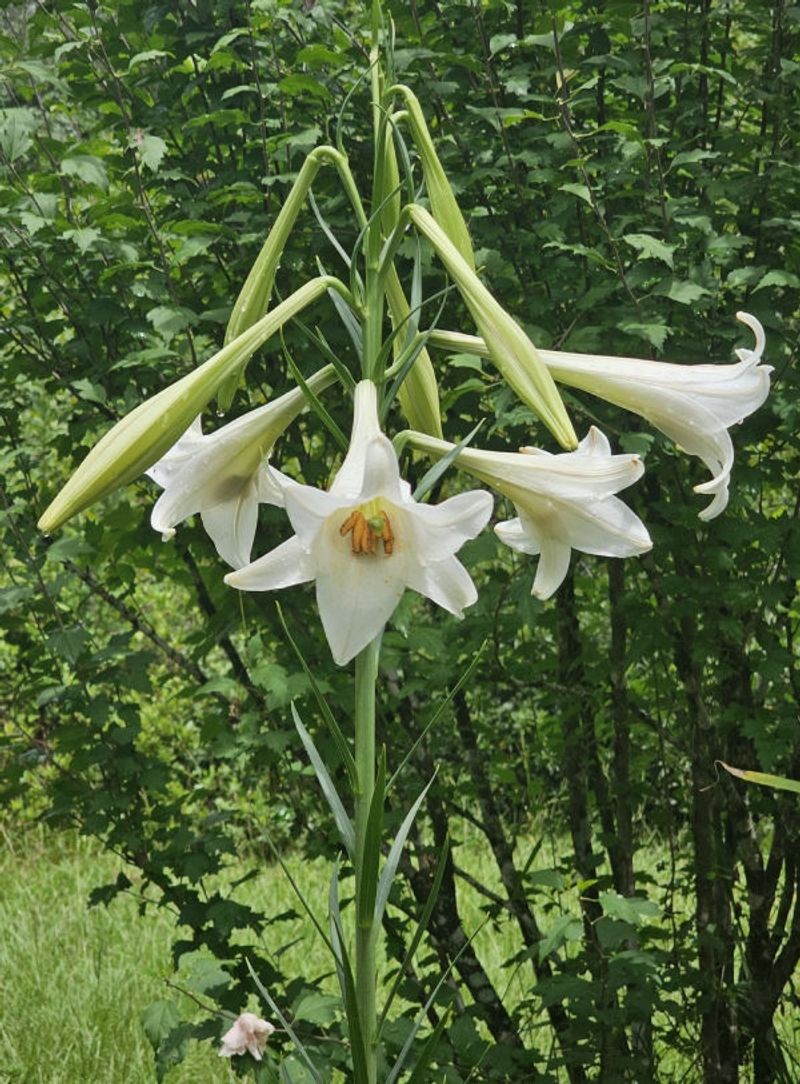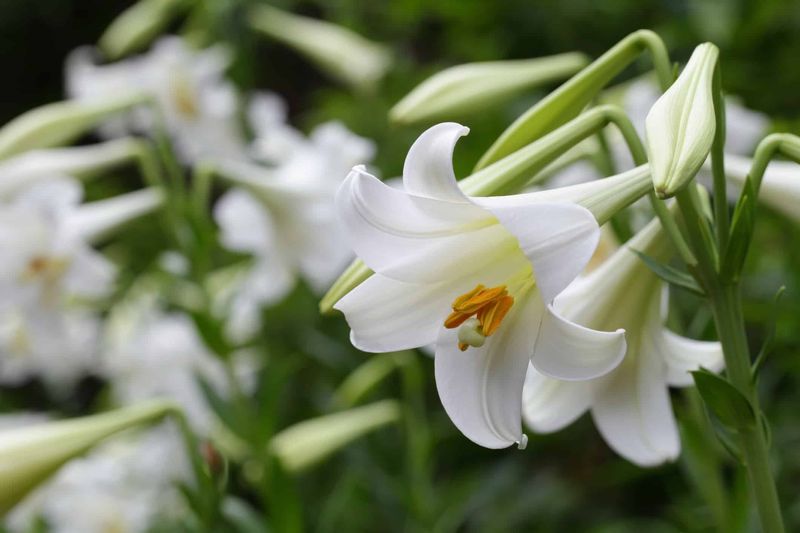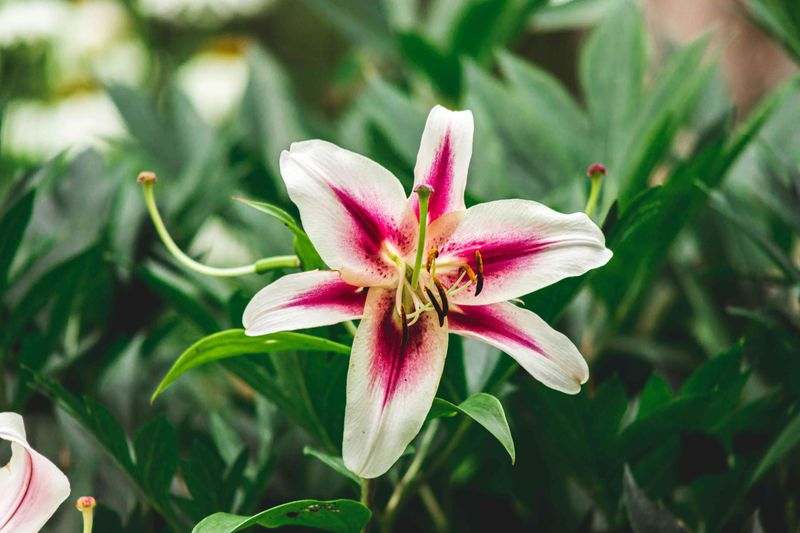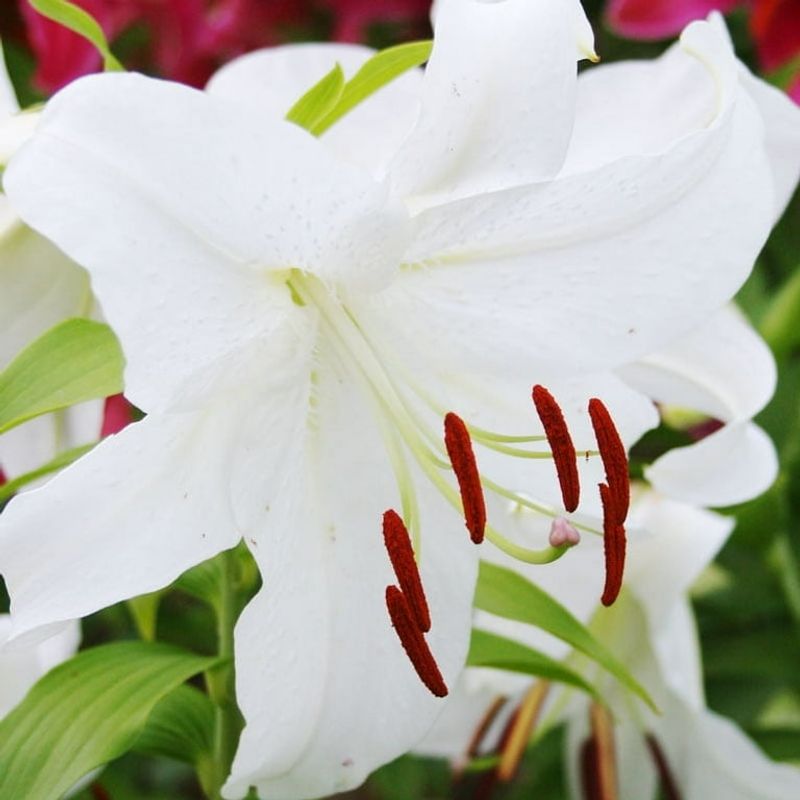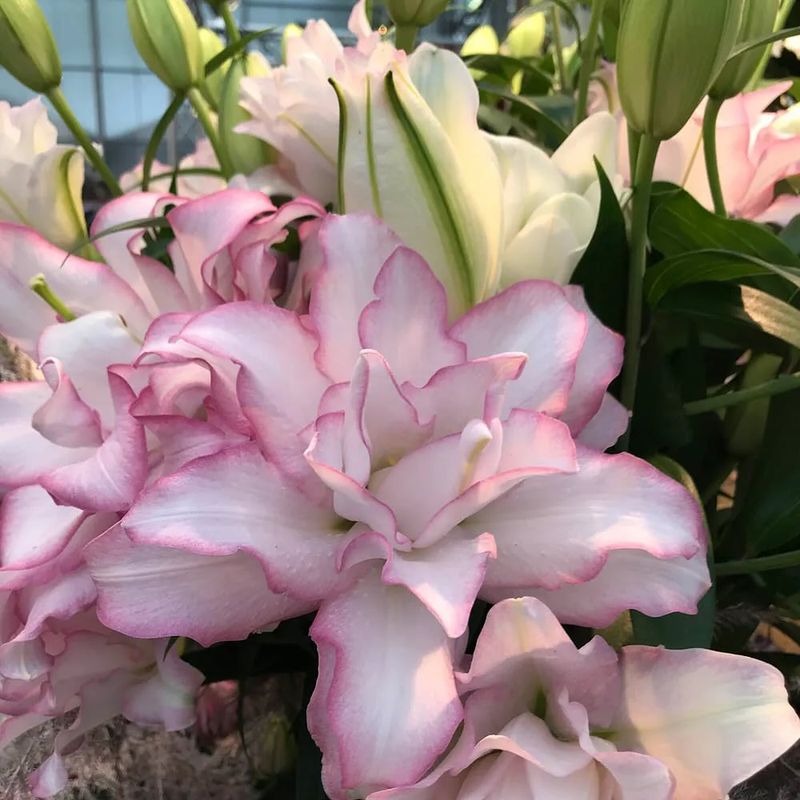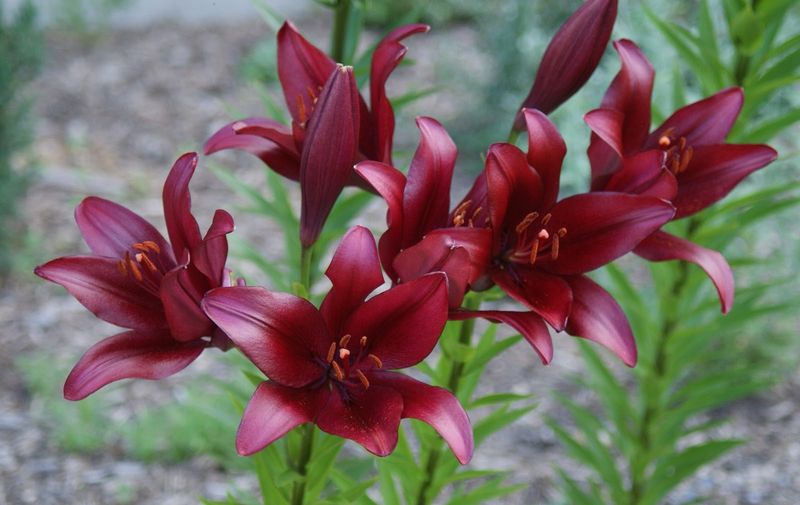If you’re hoping to turn your garden into a hummingbird haven, choosing the right flowers makes all the difference. I’ve spent years watching these tiny aerial acrobats zip around my backyard, and I’ve noticed they definitely play favorites with lilies.
Not all lilies are created equal in the eyes of a hummingbird. Some varieties practically send out engraved invitations with their perfect combination of nectar, color, and shape, while others might as well be invisible.
Here’s my field-tested guide to the lilies that’ll have hummingbirds fighting for territory in your garden—and the ones that’ll leave them completely unimpressed.
1. Trumpet Lilies
Trumpet lilies are basically hummingbird magnets. Their long, tubular shape seems custom-designed for a hummingbird’s bill. I planted a cluster near my kitchen window, and within days, they became the most popular spot in the garden.
The nectar is abundant and sweet, exactly what these high-energy birds crave. They typically bloom in mid-summer when hummingbird activity peaks in most regions.
The white varieties might not catch your eye immediately, but hummingbirds don’t seem to care about the color as much as the shape and nectar reward they know awaits inside.
2. Orienpet Hybrid Lilies
Ever watch a hummingbird make a beeline across your entire garden? That’s what happens when Orienpet lilies bloom. These crosses between Oriental and trumpet lilies inherit the best traits of both parents: strong fragrance and ideal flower shape.
The large, outward-facing blooms provide perfect landing platforms. What surprised me was how the birds seemed to memorize exactly where these lilies were planted and check them daily.
Their late summer blooming period extends the hummingbird season just when many other flowers are fading, making them crucial for late-season visitors preparing for migration.
3. Turk’s Cap Lilies
Turk’s Cap lilies aren’t actually true lilies, but try telling that to the hummingbirds! The distinctive curved petals that never fully open create the perfect shape for these birds to access nectar. I added these to my shade garden where other hummingbird plants struggled.
The dangling, bright red blooms sway with the slightest breeze, catching both light and attention. Hummingbirds seem especially territorial around these plants, chasing away competitors.
Unlike many garden flowers that have been bred for humans’ preferences, Turk’s Cap has maintained its wild characteristics that co-evolved with hummingbirds, making it irresistible to them.
4. Asiatic Lilies
These might not seem like an obvious choice, but the bright orange and red varieties have proven surprisingly popular with my backyard hummingbirds. Their upward-facing blooms make nectar access straightforward, even though they lack the classic tubular shape.
What these lilies lack in nectar quantity, they make up for in bloom count—a single stem can produce up to 12 flowers! This abundance means hummingbirds can feed efficiently, moving from bloom to bloom.
They’re also among the earliest lilies to flower, providing crucial nectar when spring food sources are limited and hummingbirds are just returning from migration.
5. Canada Lilies
Native wildflowers often outperform cultivated varieties when it comes to attracting wildlife, and Canada lilies prove this rule. Found naturally in meadows and woodland edges, these nodding yellow-orange blooms have been feeding hummingbirds long before gardens existed.
I’ve noticed hummingbirds visit these lilies most actively in early morning. The downward-facing flowers provide shelter for feeding during light rain, something many other flowers can’t offer.
Adding these to the wilder edges of your garden creates a natural transition zone that attracts not just hummingbirds but beneficial insects that help control garden pests.
6. Tiger Lilies
These were my grandmother’s favorite, and now I understand why—they’re hummingbird central! Those distinctive spotted orange petals that curve backward create perfect access to the nectar-rich center.
What makes these lilies special is their exceptionally long blooming period. A well-established clump will provide nectar for weeks, becoming a reliable food source that hummingbirds return to daily.
They’re also among the most drought-tolerant lilies, continuing to produce nectar even during dry spells when other flowers might reduce nectar production—exactly when hummingbirds need the support most.
7. Michigan Lily
Michigan lilies aren’t commonly found in garden centers, but they’re worth seeking out. Their dramatic downward-facing orange flowers with strongly recurved petals seem designed specifically for hummingbird access.
I planted these in a wet area of my yard where other lilies wouldn’t thrive. The birds found them within hours! Being native to North America means they’ve co-evolved with our local hummingbird species.
An unexpected benefit: they bloom exactly when juvenile hummingbirds are learning to feed independently. The open flower structure makes them perfect “training flowers” for inexperienced birds still perfecting their hovering and feeding techniques.
8. Wood Lilies
Wood lilies might be the best-kept secret in the hummingbird garden. These native upright bloomers with their vibrant orange-red coloration are absolute hummingbird favorites in my woodland garden edge.
Unlike many garden lilies, wood lilies evolved alongside North American hummingbirds, creating a perfect ecological match. The upward-facing blooms stand out against green foliage, serving as natural billboards advertising their nectar.
They’re also among the few lilies that thrive in partial shade, making them perfect for woodland gardens where many sun-loving hummingbird plants struggle. Just be patient—they’re slow to establish but worth the wait.
9. Martagon Lilies
These lilies were an accidental discovery in my shade garden. I planted them for their unique appearance, not expecting them to be hummingbird magnets. Their whorled leaves and candelabra-like flower stalks topped with dozens of small, recurved blooms create quite a display.
The small size of each individual bloom is deceiving—they produce substantial nectar, especially in morning hours. Hummingbirds can feed from multiple flowers without moving to another plant, making them energy-efficient feeding stations.
Once established, they’re remarkably long-lived. My original planting is now in its eighth year and still expanding, creating a reliable food source the birds return to year after year.
10. Coral Lilies
Coral lilies (Lilium pumilum) might be small in stature, but they make up for it with hummingbird appeal. Standing just 1-2 feet tall, these lilies produce intensely fragrant, bright orange-red flowers that flare outward like miniature trumpets.
I tucked some into the front edge of my perennial border where they’re easily visible from my porch. Their early summer blooming period perfectly bridges the gap between spring bulbs and summer perennials when nectar can be scarce.
Despite their delicate appearance, they’re surprisingly tough and return reliably year after year. The hummingbirds seem to appreciate their consistent presence, often checking the spot even before the lilies emerge.
11. Fire Lilies
These earned their dramatic name honestly—both for their flame-colored blooms and their ability to ignite hummingbird activity. When these start flowering, the aerial battles between hummingbirds for access rights are something to behold!
Unlike many garden lilies, fire lilies produce flowers facing in all directions around the stem. This 360-degree feeding station allows multiple hummingbirds to feed simultaneously, though they rarely tolerate each other’s presence for long.
They bloom later than most lilies, providing critical nectar in late summer when many gardens experience a lull in flowering plants. This timing makes them especially valuable for hummingbirds building energy reserves for migration.
12. Formosa Lilies
These stand out literally—growing up to 6 feet tall with massive white trumpet blooms that can reach 10 inches long. I planted just three bulbs, and they’ve become the centerpiece of my hummingbird garden.
The exceptionally deep trumpet shape means they hold a remarkable amount of nectar. Hummingbirds will dive deep inside, sometimes disappearing completely into the bloom! Their evening fragrance intensifies as day transitions to dusk, attracting hummingbirds for a final feeding before nightfall.
Despite their exotic appearance, they’re surprisingly easy to grow in most climates with good drainage. Their late July to August blooming period is perfectly timed for when hummingbird populations peak.
13. Easter Lilies
Surprised to see Easter lilies on this list? So was I until I planted some leftover holiday plants in my garden. While not traditionally considered hummingbird plants, garden-grown Easter lilies produce more nectar than their forced greenhouse counterparts.
The pure white blooms stand out dramatically against green foliage, creating a visual beacon. Hummingbirds in my garden check them regularly, though they don’t linger as long as they do on some other lily varieties.
The key is planting them where they’ll naturalize and bloom on their normal summer schedule, not the artificially accelerated Easter timeline. Their fragrance seems to serve as a secondary attractant, drawing birds from surprising distances.
14. Stargazer Lilies
Here’s where we hit our first disappointment. Despite their stunning appearance and intoxicating fragrance, Stargazer lilies rarely attract hummingbirds in my experience. I’ve had a substantial planting for years and can count on one hand the hummingbird visits I’ve witnessed.
The problem seems to be the flower structure. While beautiful to us, the wide-open face and relatively flat petals don’t create the tubular shape hummingbirds prefer. The pollen-heavy stamens can also interfere with feeding.
If you’re planting specifically for hummingbirds, your garden space is better dedicated to other lily varieties. Save these beauties for cut flower arrangements instead.
15. Casa Blanca Lilies
Casa Blanca lilies fall firmly into the “don’t bother” category for hummingbird attraction. I planted a generous number, hoping their enormous white blooms would be hummingbird magnets. Despite blooming magnificently for several years, they’ve never drawn hummingbird attention.
Their structure is similar to Stargazers—wide open with prominent stamens that don’t create the feeding tunnel hummingbirds prefer. The heavy fragrance seems oriented toward night-flying moths rather than day-active hummingbirds.
They’re still worth growing for their spectacular beauty and cut flower potential, but don’t expect them to contribute to your hummingbird habitat. Their pollen can also stain hummingbird feathers, which the birds actively avoid.
16. Double Oriental Lilies
Double Oriental lilies might win flower show ribbons, but they get a hard pass from hummingbirds. I added several varieties to my garden, and they might as well be invisible to the hummingbirds that frequent my other plants.
The problem is obvious once you understand hummingbird feeding preferences. The doubled petals create a dense flower that physically blocks access to nectar. Many doubled varieties also produce less nectar as the plant’s energy goes toward creating extra petals instead.
Their heavy blooms also tend to face downward after rain, making them even less accessible. If hummingbirds are your priority, stick with single-flowered varieties that offer clear access to the nectar they seek.
17. LA Hybrid Lilies
These represent another disappointment in the hummingbird garden. These crosses between Longiflorum and Asiatic lilies inherit flower shapes that just don’t appeal to hummingbirds. I’ve grown several varieties in prime garden locations without attracting hummingbird interest.
The upward-facing blooms look promising but lack sufficient nectar rewards. Hummingbirds are remarkably efficient foragers—they quickly learn which flowers provide good energy returns and which don’t.
After multiple seasons, I’ve observed hummingbirds actively checking these lilies early in the blooming period, then completely ignoring them afterward. Their feeding experience evidently teaches them that these showy flowers aren’t worth the energy expenditure required to visit them.

